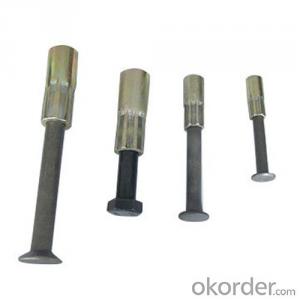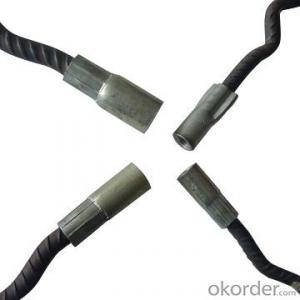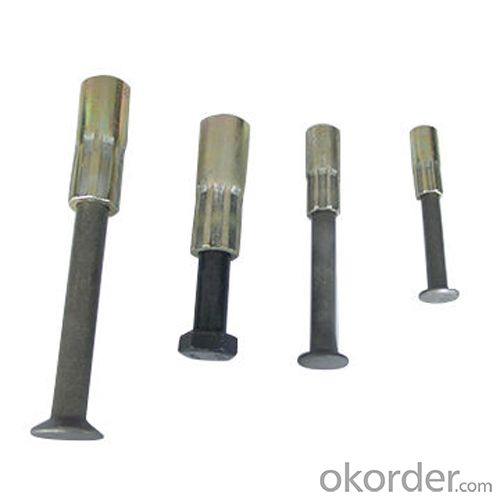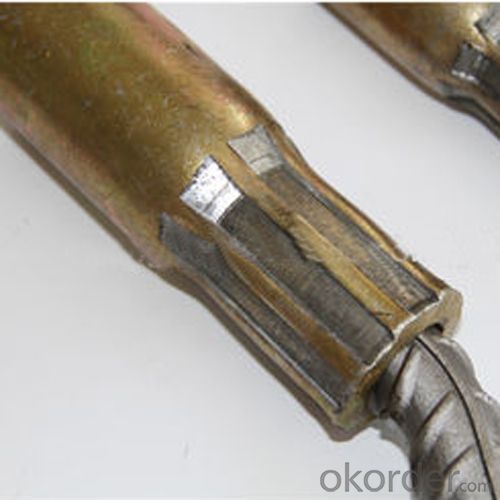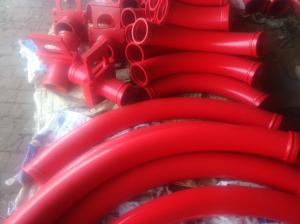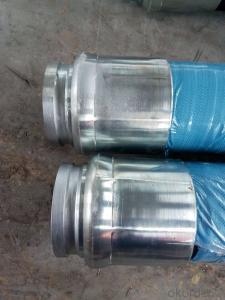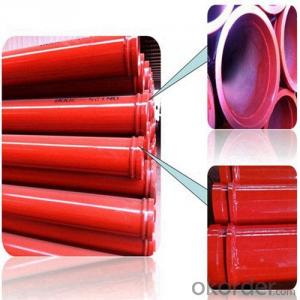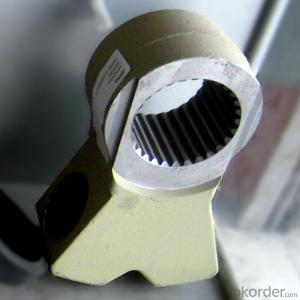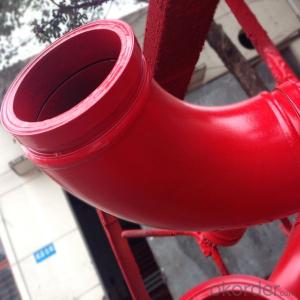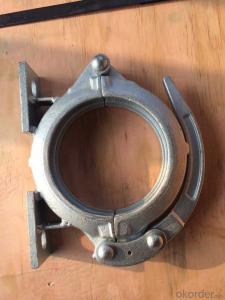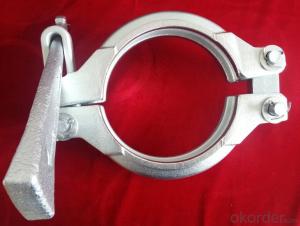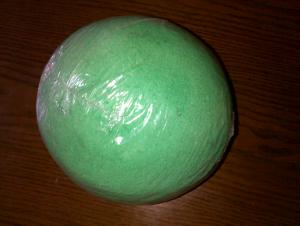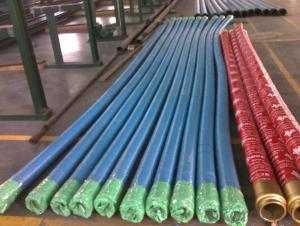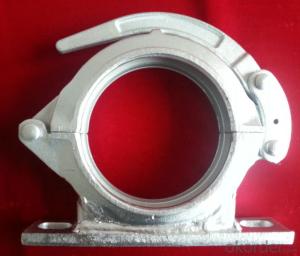Precast Concrete Accessories Lifting Anchor Capacity Loaded 0.5-12.5MT
- Loading Port:
- Tianjin
- Payment Terms:
- TT OR LC
- Min Order Qty:
- 100 pc
- Supply Capability:
- 10000 pc/month
OKorder Service Pledge
OKorder Financial Service
You Might Also Like
1. Specification:
1) Material: St52.3 or stainless steel
2) Diameter: 12mm, 17mm, 20mm, 22mm
3) Length: 40-200mm
4) Capacity: 0.5-12.5MT
5) Surface: plain, zinc plating, HDG
2. Products available:
Swift lift lifting eyes are used with the swift lift anchors to lift, handle and place precast concrete elements
3. Primary competitive advantages:
1. More than 10 years 4 years focus on building material manufacturing
Prompt delivery lead time within 25 days after confirming order
2. Eathu's products are enhanced by the factory QA and quality control checks during the production, if necessary each order can be send out with a certificate referring back to test
3. OEM/ODM capability: more then 10 years experience
4.Packaging and delivery:
Packaging details: goods packed in cartons and then on the pallet
Delivery detail: within 25 days after getting payment
· Experienced Staff
· Form A
· Guarantee/Warranty
· Packaging
· Price
· Product Features
· Product Performance
· Prompt Delivery
· Quality Approvals
· Reputation
· Service
· Small Orders Accepted
· More than 10 Years Experience
· Testing before shipping
Market:
Asia
Australasia
Central/South America
Mid East/Africa
North America
Western Europe
FAQ:
Q1: How long about delivery time Concrete Lifting anchors ?
A1: The delivery time will be very short, normally we keep the raw materials for old customers and sometime we also keep stock products to
make sure delivery time in any emergency cases.
Q2: How do we guarantee the quality of our Concrete lifting anchors?
A2: We have established an advanced quality management system which conducts strict quality tests at every step, from raw materials to the final product. At the same time, we provide extensive follow-up service assurances as required.
Q3: How soon can we receive the product after purchase?
A3: Within three days of placing an order, we will book the vessel for goods. The specific shipping date is dependent upon international and government factors, but is typically 7 to 30 workdays.
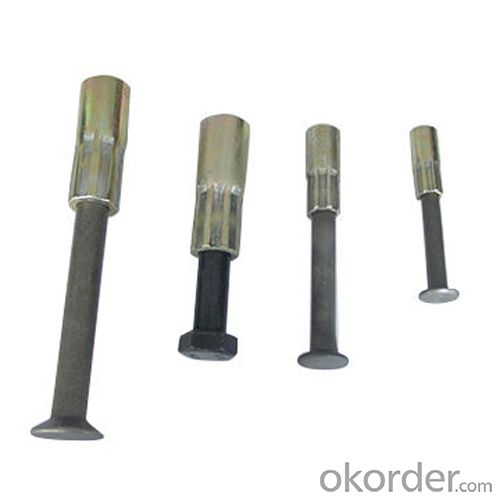
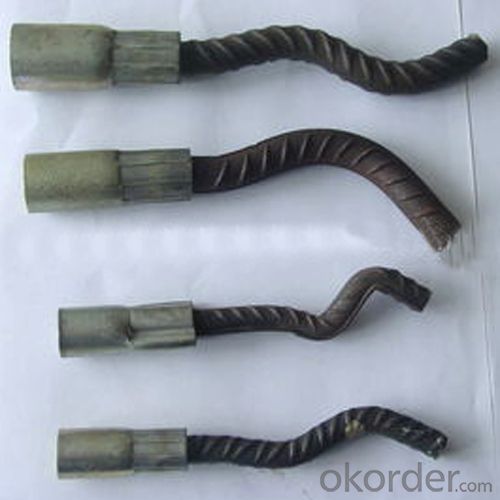
- Q: How do I determine the correct temperature ratings for concrete pump spare parts?
- To determine the correct temperature ratings for concrete pump spare parts, you should refer to the manufacturer's guidelines or specifications. These documents usually provide information on the recommended temperature range within which the parts can function effectively and safely. It is essential to follow these guidelines to ensure the longevity and performance of the spare parts in your concrete pump system.
- Q: What are the performance characteristics of concrete pump?
- Wear resistant alloy glasses plate and floating cutting ring, long service life
- Q: How often should wear rings be replaced in a concrete pump?
- Wear rings in a concrete pump should be replaced regularly, typically every 2,000 to 3,000 hours of operation. However, the frequency may vary depending on factors such as pump usage, maintenance practices, and the quality of materials being pumped. Regular inspection and monitoring of wear ring condition are essential to determine the appropriate replacement interval.
- Q: How can a faulty concrete pump cylinder affect the pumping process?
- The pumping process can be significantly impacted by a faulty cylinder in the concrete pump. The cylinder's role is crucial in the concrete pumping system as it generates the necessary pressure to push the concrete through the pipes and hoses. A decrease in pumping efficiency is one of the main issues caused by a faulty cylinder. If the cylinder is worn out or damaged, it may not generate sufficient pressure to effectively push the concrete. This can lead to a decrease in the pumping rate and overall productivity of the concrete pumping operation. Moreover, a faulty cylinder can cause irregular and inconsistent flow of concrete. This can result in blockages or clogs in the pipes, disrupting the pumping process. Removing these blockages can be time-consuming and costly, as it may require disassembling the pumping system to access and clear the blocked area. Additionally, leaks can occur in the pumping system due to a faulty cylinder. These leaks not only waste concrete but also reduce the overall pressure in the system, impacting the ability to pump the concrete to the desired location. Furthermore, leaks can create a messy worksite, posing safety risks for workers and potentially damaging surrounding structures. Furthermore, the risk of equipment failure is increased by a faulty cylinder. If the cylinder malfunctions or fails completely, it can cause the entire pumping system to shut down. This can result in significant downtime and delays in the concrete pouring process, leading to additional costs and potential penalties. In conclusion, a faulty concrete pump cylinder can have a significant impact on the pumping process by reducing efficiency, causing irregular flow, promoting leaks, and increasing the risk of equipment failure. To ensure smooth and efficient concrete pumping operations, it is essential to regularly maintain, inspect, and replace the cylinder in a timely manner.
- Q: How can one identify the correct thread size and type for concrete pump spare parts?
- To identify the correct thread size and type for concrete pump spare parts, one can start by consulting the manufacturer's specifications and documentation. These resources often provide detailed information on the thread size and type used in the equipment. Additionally, measuring the existing thread on the spare part or the corresponding component can help determine the correct thread size and type. Utilizing thread gauges or consulting a professional in the industry can also provide accurate identification of the required thread size and type for concrete pump spare parts.
- Q: What are some common issues with concrete pump hoses and how can they be prevented?
- Concrete pump hoses can encounter various problems such as blockages, leaks, and premature wear. To avoid these issues, it is essential to adhere to proper maintenance and usage practices. 1. Blockages: Blockages can occur when concrete or debris hardens inside the hoses. Thoroughly cleaning the hoses after each use is crucial to prevent blockages. Flushing the hoses with water or using a cleaning sponge ball effectively removes any residue or build-up. Additionally, using the correct size and length of hose for the job reduces the risk of blockages. 2. Leaks: Leaks may result from wear and tear, improper connections, or hose damage. Regularly inspecting the hoses is vital to detect any signs of leakage. Any leaks detected should be promptly repaired or replaced. Properly connecting and securing the hose fittings also helps prevent leaks. 3. Premature Wear: Over time, concrete pump hoses can wear out due to factors such as abrasion, bending, and exposure to harsh chemicals. Handling the hoses with care and avoiding dragging them on rough surfaces is important to prevent premature wear. Using protective sleeves or guards provides additional protection against abrasion. Regularly inspecting the hoses for signs of wear and replacing them when necessary is essential. 4. Storage Practices: Improper storage of concrete pump hoses can cause damage and reduce their lifespan. Storing the hoses in a clean and dry environment away from direct sunlight and extreme temperatures is recommended. Properly coiling the hoses and avoiding sharp bends or kinks helps maintain their integrity. 5. Pressure Management: Exceeding the recommended pressure limits can result in hose bursts or failures. Ensuring that the concrete pump operates within the specified pressure range is crucial. Regularly inspecting the pressure gauges and monitoring the pumping process aids in preventing over-pressurization. By adhering to these preventive measures, conducting regular inspections, and performing necessary maintenance, the common issues associated with concrete pump hoses can be minimized. This, in turn, leads to improved performance and increased longevity of the hoses.
- Q: How do I troubleshoot issues related to concrete pump spare parts control systems?
- To troubleshoot issues related to concrete pump spare parts control systems, it is important to follow a systematic approach. Here are some steps you can take: 1. Identify the problem: Begin by clearly identifying the issue you are experiencing with the control system. Is it not working at all? Are there specific functions or components that are not functioning correctly? Understanding the problem will help guide your troubleshooting efforts. 2. Check power supply: Ensure that the control system is receiving proper power supply. Check the power source, circuit breakers, and fuses to ensure there are no interruptions or faults in the electrical supply. If needed, replace or repair any faulty components. 3. Inspect connections: Examine the wiring connections and terminals within the control system. Loose or damaged connections can cause issues with the functioning of the system. Tighten any loose connections and repair or replace any damaged wiring. 4. Review control settings: Verify that the control settings are correctly adjusted according to the manufacturer's specifications. Incorrect settings can lead to malfunctions or inefficient operation. Consult the user manual or contact the manufacturer for guidance on proper control settings. 5. Perform diagnostic tests: Many control systems have built-in diagnostic features or error codes that can help identify specific issues. Consult the system's manual to understand how to access and interpret these diagnostic tools. Run any recommended diagnostic tests to pinpoint the problem area. 6. Inspect sensors and actuators: Sensors and actuators play a crucial role in the control system's operation. Check these components for any damage, misalignment, or malfunctioning. Clean or replace sensors as needed and ensure the actuators are properly connected and functioning correctly. 7. Consult technical support: If you have followed the above steps and are still unable to resolve the issue, it may be helpful to contact the manufacturer's technical support team. They can provide expert guidance on troubleshooting the specific control system and may suggest additional steps or solutions. Remember to always prioritize safety when troubleshooting control systems. Ensure that the pump is turned off and disconnected from the power source before working on any electrical components. If you are unsure or uncomfortable with any troubleshooting steps, it is best to seek professional assistance.
- Q: How often should hopper grate handles be inspected or replaced in a concrete pump?
- Regular inspections should be conducted on hopper grate handles in a concrete pump to identify any signs of wear and tear or damage. The frequency of these inspections and the need for replacement may vary depending on the equipment's usage and condition. It is suggested that the hopper grate handles be inspected at least once a month or after every 500 hours of operation, whichever occurs first. During the inspection, it is important to verify that the handles are firmly attached to the hopper grate and to examine them for any cracks, bends, or other structural problems. If any damage is detected, it is recommended to promptly replace the handles to prevent accidents or further harm to the equipment. It is also crucial to adhere to the manufacturer's guidelines and recommendations for the maintenance and replacement of hopper grate handles. By regularly inspecting and replacing the handles as necessary, the safe and efficient operation of the concrete pump can be ensured.
- Q: How does a concrete pump hopper grate prevent clogs?
- A concrete pump hopper grate plays a crucial role in preventing clogs by acting as a filter and allowing only the required size of aggregate or material to pass through. It is designed with small openings or grids that are strategically placed to catch any excess debris, rocks, or large particles that can potentially cause clogs in the pump system. As the concrete mixture is poured into the hopper, the grate acts as a barrier, ensuring that only the properly sized material passes through while obstructing any larger or unwanted debris. This helps maintain the smooth flow of concrete through the pump system, preventing any blockages or jams that can disrupt the construction process. Moreover, the grate is often made of durable materials such as steel or high-density polyethylene, which are resistant to wear and tear. This ensures that it can withstand the high-pressure environment and continuous operation without being damaged or deformed. Regular maintenance and cleaning of the hopper grate are also essential to prevent clogs. By regularly inspecting and removing any accumulated debris or build-up, operators can ensure that the grate remains clear and fully functional, preventing potential clogging issues. In summary, a concrete pump hopper grate prevents clogs by acting as a filter, allowing only the required size of aggregate to pass through while catching any larger particles or debris. Its design and material durability ensure a smooth flow of concrete through the pump system, minimizing the risk of blockages and maintaining the efficiency of construction operations.
- Q: What is the function of a concrete pump remote control antenna?
- The function of a concrete pump remote control antenna is to establish a wireless connection between the remote control device and the concrete pump. This allows the operator to remotely control the various functions of the concrete pump, such as starting and stopping the pump, adjusting the speed and flow of the concrete, and controlling the boom movements. The antenna receives signals from the remote control device and transmits them to the concrete pump, enabling the operator to control the pump from a safe distance. This helps improve efficiency, accuracy, and safety on construction sites by allowing the operator to have better visibility of the pump and its surroundings while still maintaining full control over its operations.
Send your message to us
Precast Concrete Accessories Lifting Anchor Capacity Loaded 0.5-12.5MT
- Loading Port:
- Tianjin
- Payment Terms:
- TT OR LC
- Min Order Qty:
- 100 pc
- Supply Capability:
- 10000 pc/month
OKorder Service Pledge
OKorder Financial Service
Similar products
Hot products
Hot Searches
Related keywords
